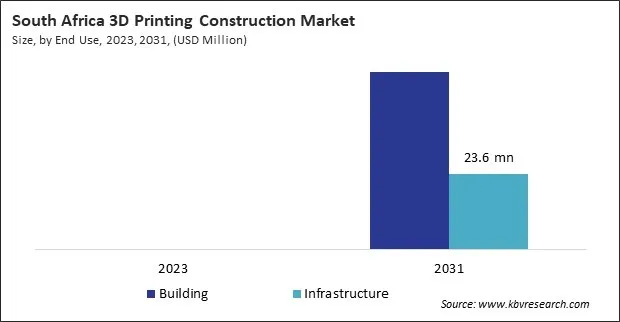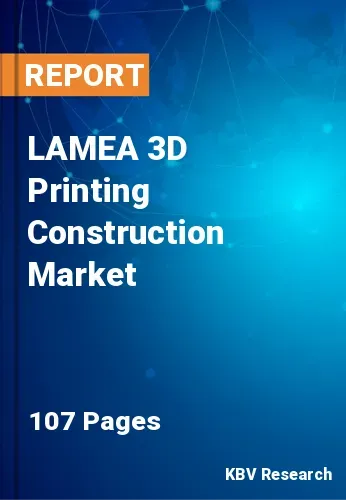The Latin America, Middle East and Africa 3D Printing Construction Market would witness market growth of 105.1% CAGR during the forecast period (2024-2031).
The Brazil market dominated the LAMEA 3D Printing Construction Market by Country in 2023, and would continue to be a dominant market till 2031; thereby, achieving a market value of $181.1 million by 2031. The Argentina market is showcasing a CAGR of 106.5% during (2024 - 2031). Additionally, The UAE market would register a CAGR of 103% during (2024 - 2031).

The rapid construction capabilities offered by 3D printing are particularly attractive in a market that demands faster delivery times. 3D printers can build entire structures in a fraction of the time it would take using conventional methods, reducing project timelines from months or years to just days or weeks. This is especially valuable in emergencies where time is of the essence, such as disaster relief efforts or the need for affordable housing in rapidly growing urban areas.
3D printing is being used in numerous ways across various construction industry sectors. Its versatility allows it to create buildings, infrastructure, and components for large-scale construction projects. One of the most recognized applications is the creation of concrete-based structures. These structures range from entire buildings to specific components such as walls, beams, and floors. The use of concrete in 3D printing allows for high durability and strength, making it suitable for long-term residential, commercial, and industrial applications.
The UAE’s growing emphasis on becoming a global leader in innovation also accelerates the adoption of 3D printing technology in construction. Dubai, in particular, has already begun utilizing 3D printing to construct buildings and infrastructure, such as the world’s first fully 3D-printed office. The UAE’s goal to incorporate advanced technologies across sectors, including construction, is propelling 3D printing as a viable method for building large-scale projects, including housing, bridges, and offices. Nigeria's construction industry is expanding alongside a growing demand for infrastructure, housing, and urban development projects. As the population increases and urbanization accelerates, Nigeria faces challenges in meeting its citizens' housing and infrastructure needs. With a need for affordable housing solutions and faster construction methods, 3D printing technology can offer significant advantages. Thus, the growing focus on innovation and infrastructure development in the UAE and Nigeria positions 3D printing as a key driver for addressing housing shortages, enhancing construction efficiency, and fostering sector growth.
Free Valuable Insights: The Worldwide 3D Printing Construction Market is Projected to reach USD 9.2 Billion by 2031, at a CAGR of 101.9%
Based on End Use, the market is segmented into Building, and Infrastructure. Based on Method, the market is segmented into Extrusion, Powder Bonding, and Other Method. Based on Material Type, the market is segmented into Concrete, Metal, Composite, and Other Material Type. Based on countries, the market is segmented into Brazil, Argentina, UAE, Saudi Arabia, South Africa, Nigeria, and Rest of LAMEA.

By End Use
By Method
By Material Type
By Country
Our team of dedicated experts can provide you with attractive expansion opportunities for your business.

